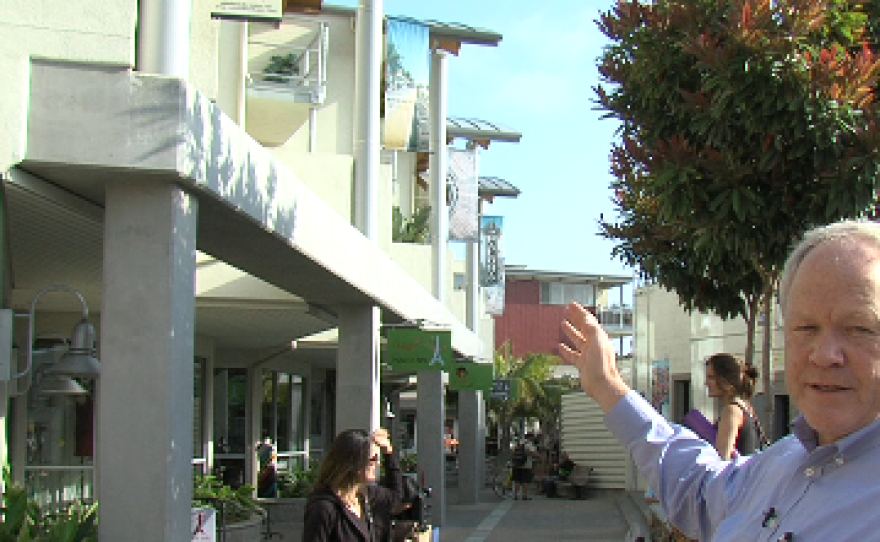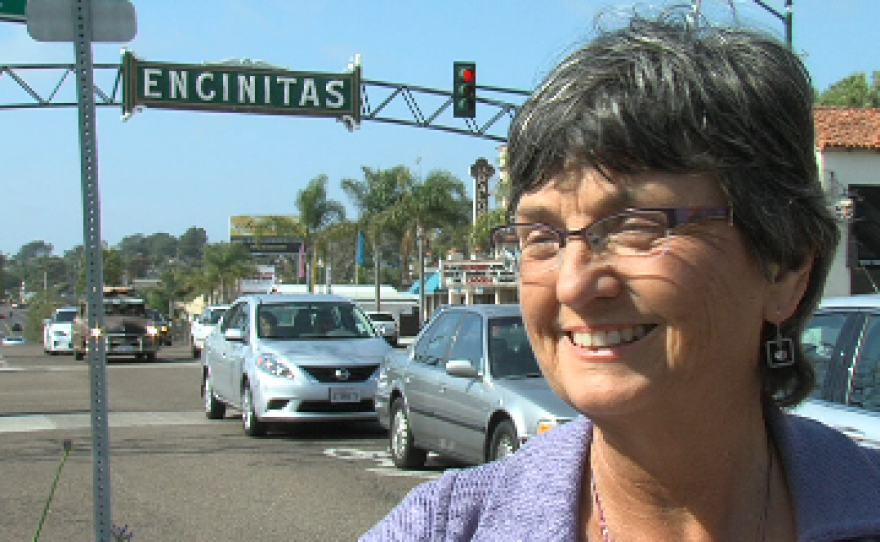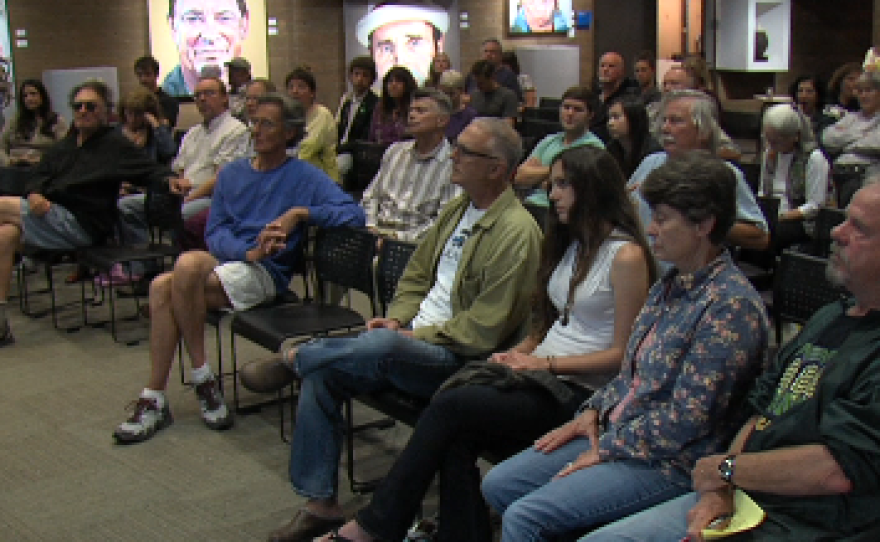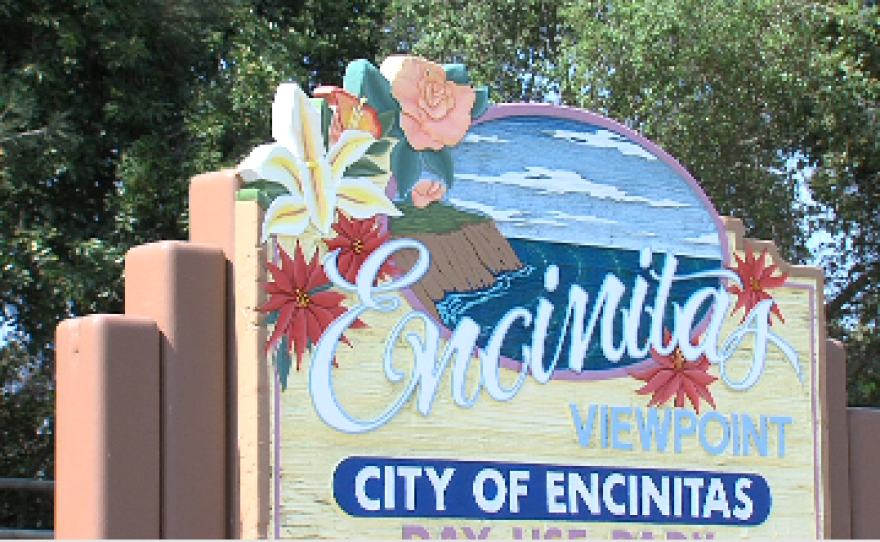Encinitas residents will vote in a special election on June 18th on Proposition A, an initiative that would give voters the power to strictly control future development.
Downtown Old Encinitas is full of life on warm summer evenings. People, children and dogs mingle on the sidewalks along Highway 101, enjoying the cafes, the shops and the sunshine.
Bruce Ehlers has lived in this city for almost 30 years.
"There’s certainly been growth," he said, "but the one thing we’ve managed to do quite well is hold on to our small town community character."
Ehlers, a former city planning commissioner, is the main spokesman for Proposition A, Encinitas’ "Right to Vote" initiative.
“We want anything that’s over 30 feet to go to a vote of the people,“ Ehlers explained. “That’s all we want. Likewise, higher densities, we want them to go to a vote of the people.”
Although the current elected city council is less pro-development than in recent years, Ehlers, like many residents, doesn’t trust future council members to stand up to developer interests.
“We end up with developer money chasing development opportunities, resulting in taller and taller buildings and more and more density, “ he said, “not for the benefit of the community but for the benefit of the developers.”

Pointing to new three-story apartments designed around a courtyard with cafes and shops like Whole Foods below, Ehlers explained that developers use the state’s density bonus laws to break the city’s height limits.
“For example, Pacific Station was built to three stories because it has affordable units,” he said, “so they used the excuse of affordable units to add extra density and extra cars and traffic.”
But Encinitas Mayor Teresa Barth believes the Pacific Station development represents a new kind of community.

“All of the units there have sold, so obviously, people like to live in that environment,” she said. “Whole Foods is busy all the time and people are sitting there, having lunch.”
She thinks the new development represents changing trends in the way people want to live.
“Our demographics are changing,” she explained. “The fastest growing group in our region is the seniors, people who already live here, people who are going to get out of the suburban house because the kids have all gone and they’re moving into a smaller apartment or townhouse, and they all want to live downtown. They and the millennials all want the same thing.”
Barth said both the older and the younger generations want to be able to go out their door and walk or bike to a grocery store, a restaurant, the library or the beach.
She, like the rest of the city council, opposes Proposition A as too restrictive on future kinds of development.
Some members of the current council originally supported the initiative, but after a consultant reported the height limit could have unintended consequences, they too are looking for alternative ways to incorporate public input into the planning process.
Regional planners estimate the population of Encinitas will grow from about 60,000 to about 75,000 people in the next 30 years. Like the rest of the region, the city will have to take its share of growth and provide somewhere for those people to live.
But Bruce Ehlers doesn’t buy the numbers.
“We don’t believe those numbers are true,” he said. “We think our government should represent the vast majority of citizens in Encinitas and push back and say 'hey, we aren’t going to grow that much, we don’t agree with you.'”
Ehlers opposes increased density even in New Encinitas on El Camino Real, because of the traffic.

At a recent community town hall meeting, Ehlers was applauded as he urged residents to vote for the initiative and protect the quality of life and their small town community character.
Architect Steve Shackleton, on the other hand, argued against the initiative, suggesting that giving people input on a new city general plan update is a better way to go.
“The city is re-evaluating different approaches to our housing needs,” he said. “Our general plan is still in process and wide open for anyone’s input and ideas.”
However, Encinitas has been working on its general plan update for three years, and has spent more than $1 million without reaching a consensus on how the city should grow.
What was supposed to be a two year process resulted in tumultuous opposition and draft proposals had to be pulled off the table. The plan has not been updated since 1989, three years after the city was incorporated.
Mayor Barth said the city council is committed to finalizing a new general plan and putting it to the voters next year.
She thinks passing Prop. A would backfire, by making it so difficult for developers that they will opt to use state density bonus laws to get what they want. State laws trump local elections, she said.
“It will probably, in my opinion, force more developers to go the route of the density bonus because we’re going to make things so restrictive and add costs by requiring an election.”
Barth said she understands that people are worried about losing the character of the community they love, but even if the city doesn’t grow as much as predicted, the kind of housing people want is changing.
“You know, ballot box planning doesn’t always work,” she said. “It rarely does, in all honesty, because planning is a very complex process. “
However, people are right to worry, Barth said, about a law that allows the city council to amend the General Plan with a four-fifths vote. The city council voted last week to give up that power. But opponents retort that future councils could just as easily come in and undo it.
“Which is why we are also committed to putting that on the 2014 ballot to be ratified by the public," Barth said.

But there’s no way of telling what voters will decide June 18th.
Encinitas voters face the same dilemma facing many San Diego communities: how to give today’s residents a say in how their community grows without making it so difficult that tomorrow’s residents cannot find an affordable place to live?







